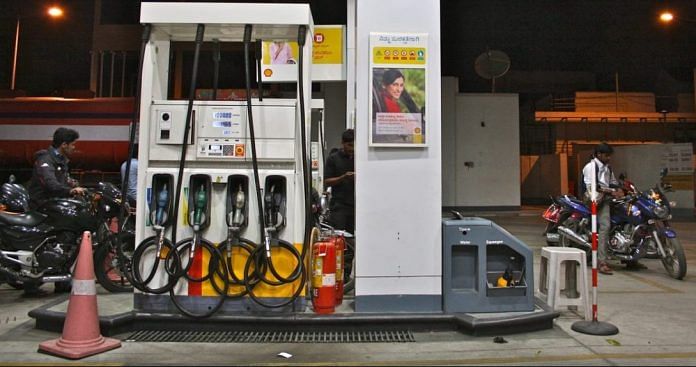The country’s reliance on monsoon and oil prices equals a not so sunny current account deficit.
From about the beginning of 2017, even skeptics had to admit, India looked to be recovering from a growth slowdown. Most dramatically, in the last two quarters for which data is available, investment in physical capital — which had long been too low for growth to recover — increased by 12 percent and 10 percent, respectively. In the first two months of 2018, exports grew by over 9 percent. For once, optimism seemed warranted: Decent growth and macroeconomic stability seemed likely to bolster optimism, encourage more investment and launch a virtuous cycle.
Unfortunately, while growth is indeed reviving, the macro-economy isn’t looking all that robust. Most worryingly, the rupee is just about the worst-performing currency in Asia this year; some analysts believe that it will, before the end of the year, be cheaper against the dollar than ever before. Others may not be as gloomy but, across the board, they’ve lowered their forecasts for India’s currency.
QuicktakeIndia’s Aspirations
What’s going on? Well, in part, the problem is a familiar one: India’s dependence on imported oil. The health of the Indian economy tends to rest on two great, uncontrollable factors — the level of monsoon rains and the price of oil. India’s enjoyed a nice run of low prices and lower import bills for the past several years, as crude prices crashed from over $100 a barrel to near $40 a barrel. But now that they’ve climbed back to $75 a barrel and may go higher, India’s again facing worries about inflation, government spending and the current account deficit.
Back when crude oil prices were at their peak, India was being talked about as one of the “fragile five” economies most at risk from a tightening of the U.S. Federal Reserve’s monetary policies. The country’s current account deficit stood at an uncomfortably high 4.8 percent of GDP. There were even murmurs that India might have to seek relief from the International Monetary Fund, until the government, spooked into action, imposed a sharp series of import controls — particularly on gold, for which India has a ravenous appetite.
Then, luckily, crude oil prices began to crash in the middle of 2014. So did the current account deficit, falling to 0.7 per cent of GDP in 2016-17. Now things are heading in the opposite direction: Kotak Institutional Equities worries that during 2018-19, India’s current account deficit could be as high 2.9 per cent of GDP.
In itself, that wouldn’t be a crisis. India has more than enough dollar reserves; capital inflows show no signs of stopping. But, the trend has been ugly enough for the rupee to crash and for worries about inflation to return. The central bank committee that sets monetary policy for India released the minutes of its last meeting recently and most members seem to think that the Reserve Bank of India might need to act soon. In other words, the incipient recovery might be choked off by higher rates even before it properly begins.
It’s a frustrating rerun: Once again, India’s insatiable thirst for imports seems destined hold it back. But, that’s really only half the story. While the cost of imports is rising, exports, in a well-run economy, should be rising to compensate.
Instead, India has consistently under-performed as an exporter. After the healthy start to 2018, export growth turned negative in March. Four years ago, India exported $310 billion worth of goods a year. Now, it exports $302 billion a year — the lowest, as a percentage of GDP, in a decade and a half. And anemic world trade isn’t to blame. Four years ago, Vietnam’s exports were $150 billion; in 2017, at $213 billion, they were worth 43 percent more.
India’s failure isn’t the inability to wean itself off imported crude. It’s that it has failed to compete in world markets so it can pay for the oil it needs.
India has wasted the easy years since 2014, when it should have reformed its export processes, cut red tape, backed its manufacturers and pushed them to go out and create new markets. Instead, export processes are by and large just as complex and inefficient as they were four years ago. Tax incentives for exporters have been withdrawn, tax refunds withheld and the entire orientation of India’s economy turned inward. Instead of building up exports, India has decided to try and ward off imports; the government has raised tariffs across the board, for the first time in a generation.
There’s still time to reverse things. If the rupee does in fact hit record lows, India shouldn’t mourn. It should see the new level as a boost for its exporters, an unhoped-for reduction in the price of Indian goods. The government should follow up by slashing red tape and the tariffs that keep Indian companies from integrating with global supply chains. India’s import dependence need not be a chronic disease. There is a cure: exports.
– Bloomberg






